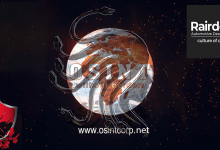Examining the Causes and Consequences of Recent Incidents: A Critical Review
Examining the Causes and Consequences of Recent Incidents: A Critical Review
In recent times, incidents of various natures have occurred, capturing the attention of the public and often leading to significant consequences. Whether it be a natural disaster, a man-made crisis, or a controversial decision, understanding the causes and consequences of these incidents is not only crucial for learning from past mistakes but also for implementing measures to prevent similar incidents in the future.
One of the key aspects of examining recent incidents is critically reviewing their causes. It is imperative to identify the underlying factors that contributed to the occurrence of these incidents. This process involves thorough research, analysis, and evaluation of the circumstances leading up to the event. By identifying root causes, we can gain insights into the vulnerabilities, shortcomings, and systemic issues that allowed the incident to happen. Examining causes from a critical standpoint enables us to move beyond blaming individuals or circumstances and instead focus on identifying the underlying structural and systemic factors that need addressing.
Moreover, understanding the consequences of recent incidents is equally important. The aftermath of any incident can have far-reaching effects, not only in terms of immediate damage but also on the wider community, economy, and environment. Examining the consequences allows us to comprehend the extent of the impact and evaluate the effectiveness of response and recovery efforts. By analyzing the consequences, we can identify areas where immediate relief and support are needed, as well as areas that require long-term rehabilitation and reconstruction.
Examining causes and consequences of recent incidents is not merely an academic exercise but holds practical value as well. It enables policymakers, organizations, and communities to identify gaps in existing systems and develop strategies to mitigate risks and prevent similar incidents in the future. By critically reviewing causes, we can shape policies, regulations, and response mechanisms that address root issues rather than merely dealing with symptoms. Understanding consequences can guide decision-makers in prioritizing resources and interventions to ensure a more effective and efficient response. Additionally, these examinations help foster public awareness, accountability, and transparency, leading to increased public trust in the handling of incidents.
However, examining causes and consequences also presents challenges. It often involves complex interactions between various factors and stakeholders, making it difficult to determine a singular cause or predict with certainty the long-term consequences. Additionally, analyzing incidents while emotions are still raw can result in subjective evaluations and attributions. Balancing the need for immediate action and comprehensive analysis can be a challenge, necessitating a multi-disciplinary approach involving experts from different fields such as engineering, social sciences, and public policy.
To enable a thorough and objective examination of recent incidents, it is crucial to establish independent investigative bodies that operate transparently and free from political or corporate influence. These bodies should be empowered to conduct in-depth investigations, collaborate with experts, consult stakeholders, and provide unbiased and evidence-based reports. Such an approach ensures credibility and creates a foundation for meaningful change.
In conclusion, examining the causes and consequences of recent incidents is a critical process that holds immense significance for learning, prevention, and effective response. By conducting a comprehensive and critical review, policymakers, organizations, and communities can identify systemic issues, address vulnerabilities, and develop measures to prevent similar incidents in the future. Furthermore, understanding the consequences enables efficient allocation of resources and facilitates long-term recovery. However, this examination requires a multi-disciplinary approach and the establishment of independent investigative bodies to ensure objectivity and generate actionable insights. Only through such thorough examinations can we make informed decisions and build a safer and more resilient society.




